Business Communication Skills: Models and Methods Report
VerifiedAdded on 2023/02/02
|13
|838
|74
Report
AI Summary
This report provides a comprehensive overview of business communication, exploring various communication models such as Shannon and Weaver's Information Theory Model, Aristotle's Persuasion Model, and the Circular Model, detailing their application within organizations. It examines different communication methods including written, verbal, non-verbal, and electronic approaches. The report highlights the benefits of both formal and informal communication, emphasizing how technology, including cloud computing and social media, facilitates information exchange. Furthermore, it addresses potential barriers to effective communication, such as physical, linguistic, and emotional barriers, and concludes by underscoring the importance of effective communication across all levels of a business for smooth operations and efficiency. References are provided to support the discussed concepts.
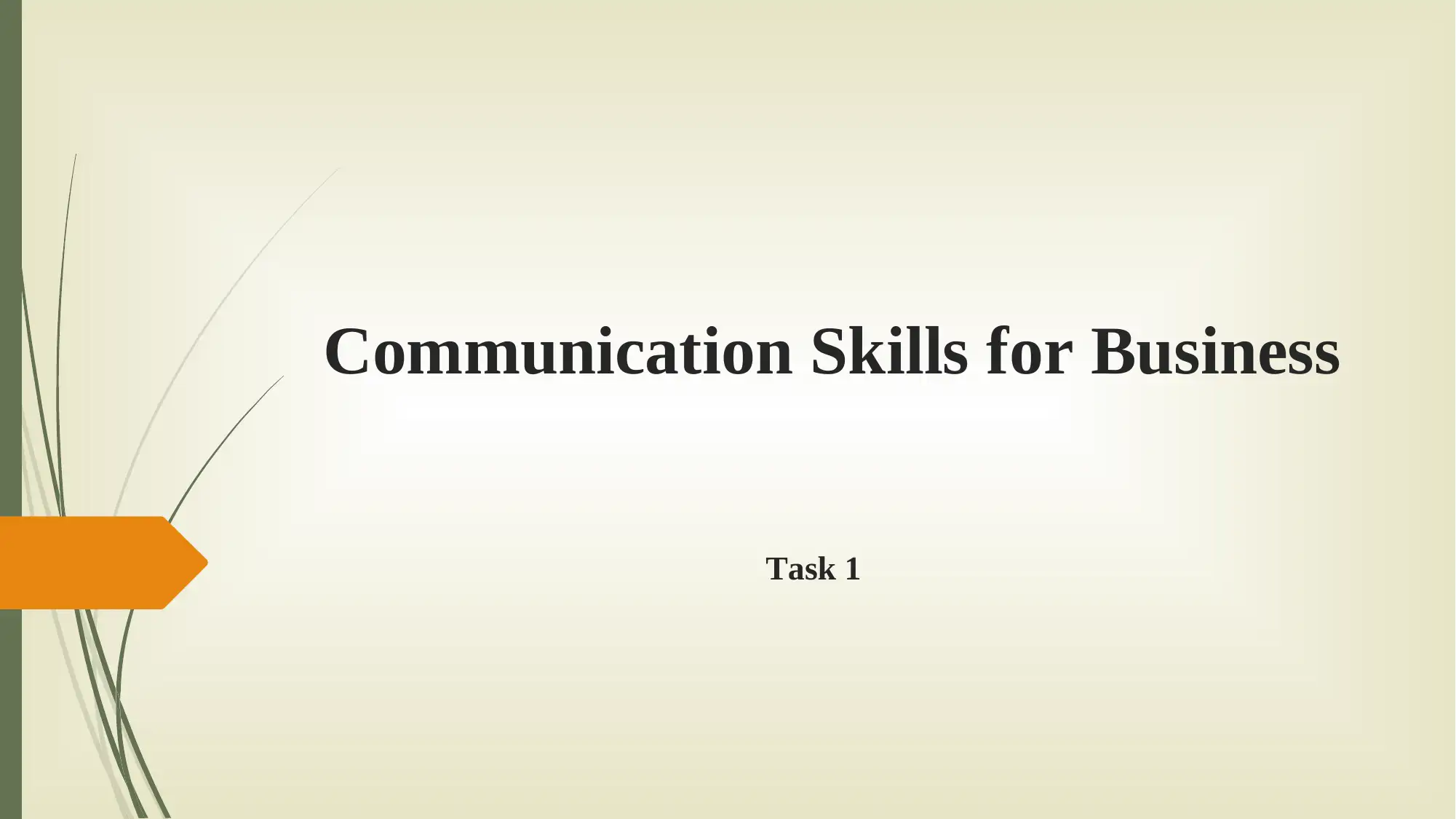
Communication Skills for Business
Task 1
Task 1
Paraphrase This Document
Need a fresh take? Get an instant paraphrase of this document with our AI Paraphraser
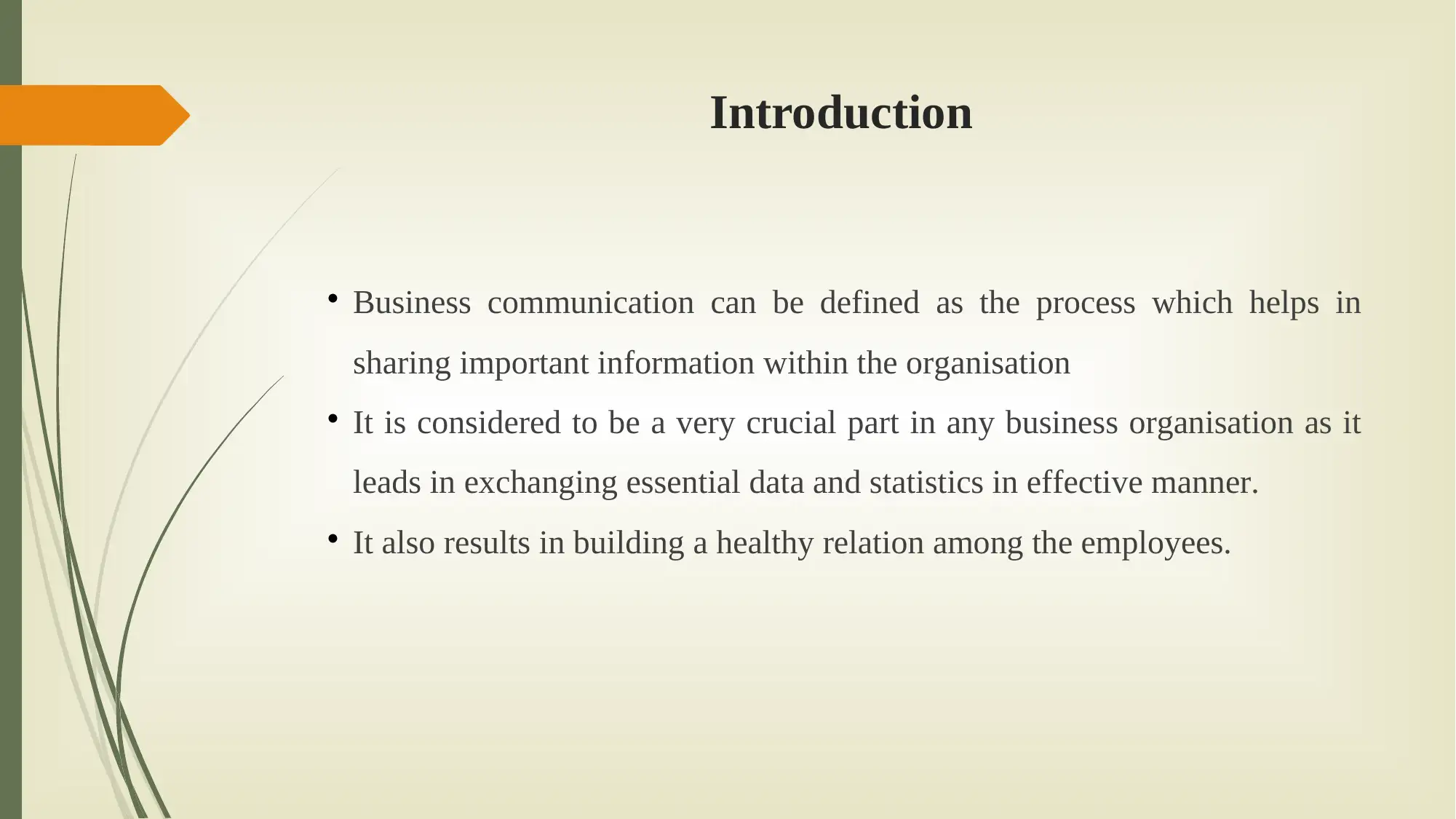
Introduction
Business communication can be defined as the process which helps in
sharing important information within the organisation
It is considered to be a very crucial part in any business organisation as it
leads in exchanging essential data and statistics in effective manner.
It also results in building a healthy relation among the employees.
Business communication can be defined as the process which helps in
sharing important information within the organisation
It is considered to be a very crucial part in any business organisation as it
leads in exchanging essential data and statistics in effective manner.
It also results in building a healthy relation among the employees.
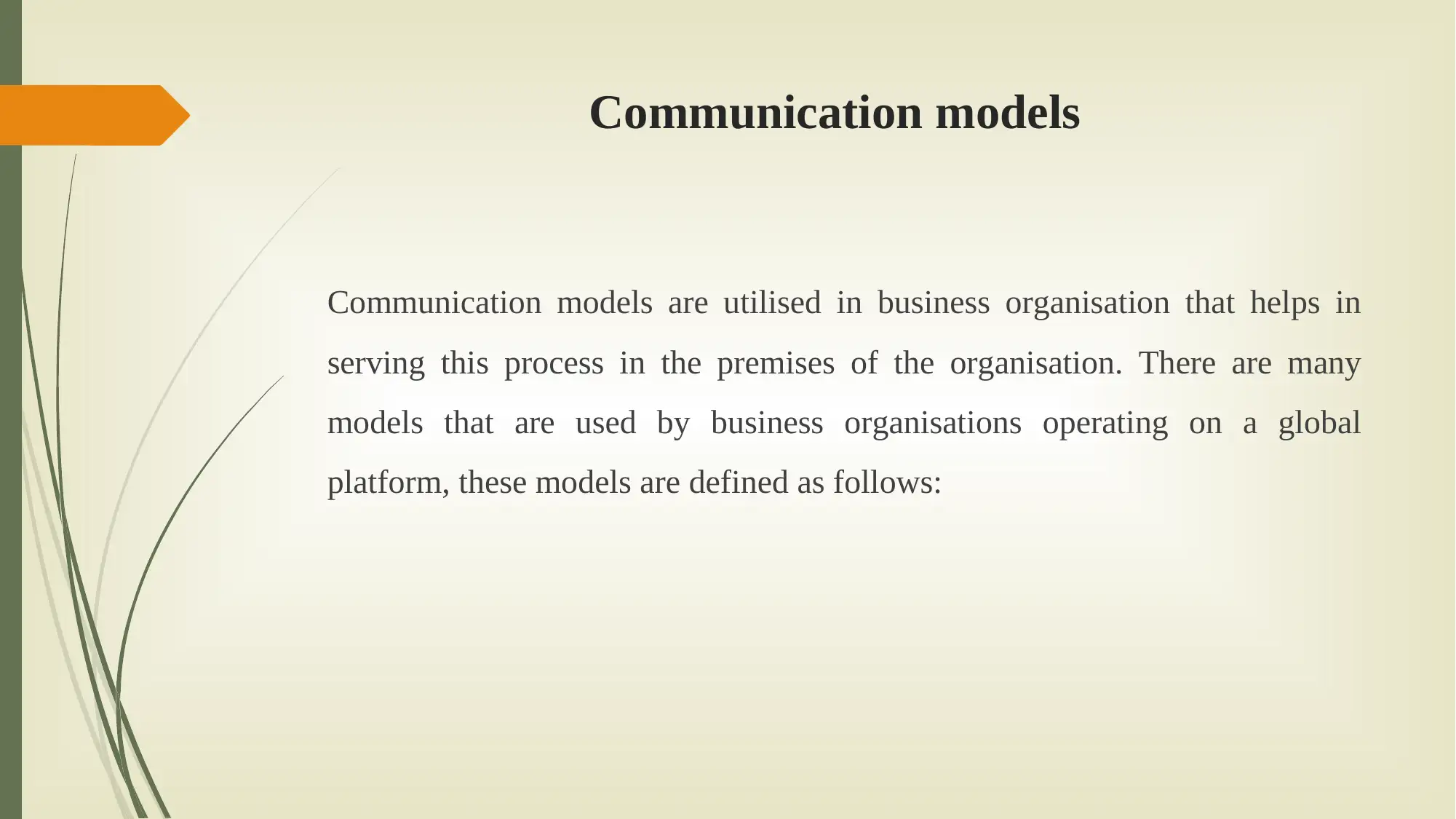
Communication models
Communication models are utilised in business organisation that helps in
serving this process in the premises of the organisation. There are many
models that are used by business organisations operating on a global
platform, these models are defined as follows:
Communication models are utilised in business organisation that helps in
serving this process in the premises of the organisation. There are many
models that are used by business organisations operating on a global
platform, these models are defined as follows:
⊘ This is a preview!⊘
Do you want full access?
Subscribe today to unlock all pages.

Trusted by 1+ million students worldwide
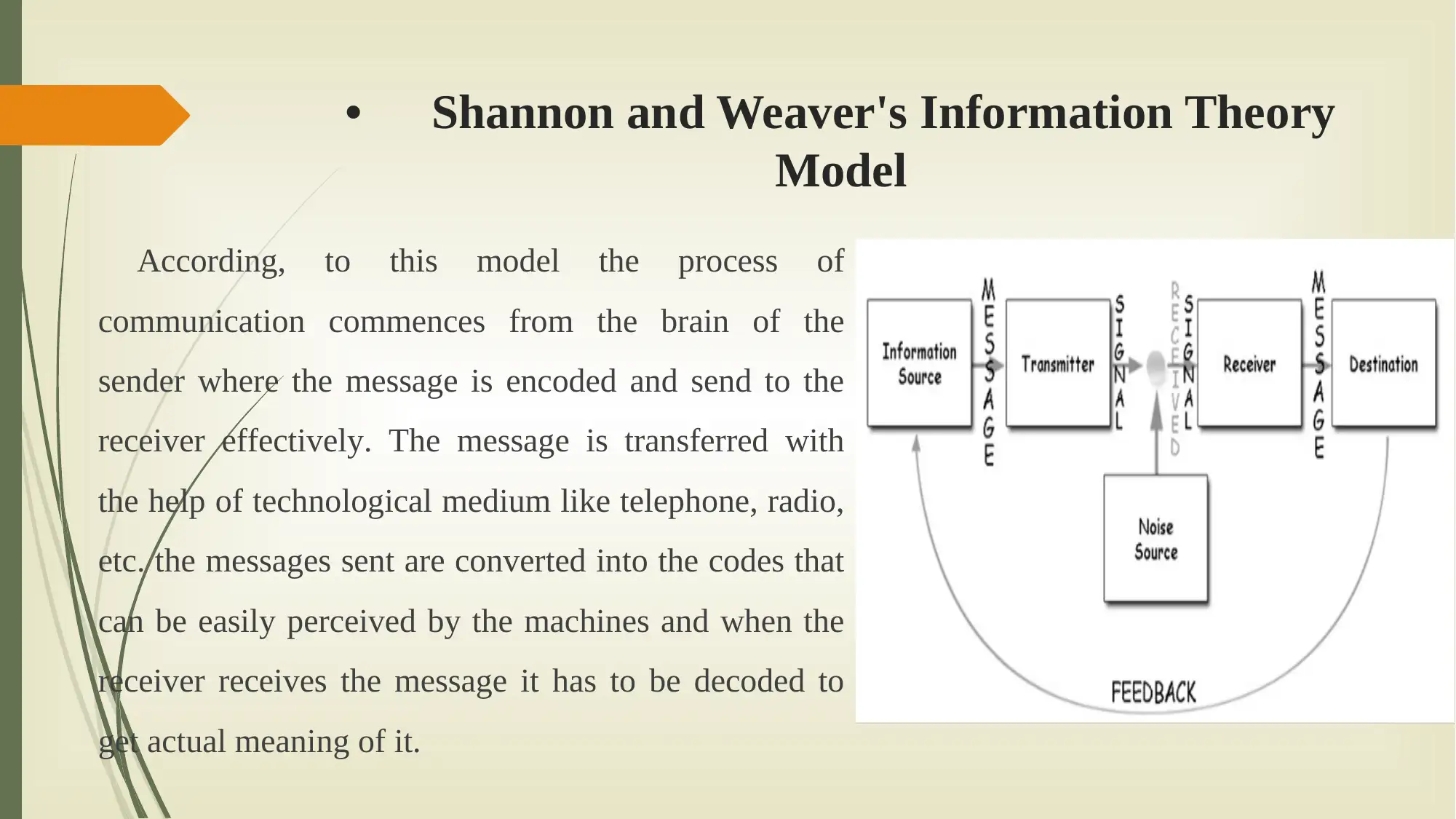
• Shannon and Weaver's Information Theory
Model
According, to this model the process of
communication commences from the brain of the
sender where the message is encoded and send to the
receiver effectively. The message is transferred with
the help of technological medium like telephone, radio,
etc. the messages sent are converted into the codes that
can be easily perceived by the machines and when the
receiver receives the message it has to be decoded to
get actual meaning of it.
Model
According, to this model the process of
communication commences from the brain of the
sender where the message is encoded and send to the
receiver effectively. The message is transferred with
the help of technological medium like telephone, radio,
etc. the messages sent are converted into the codes that
can be easily perceived by the machines and when the
receiver receives the message it has to be decoded to
get actual meaning of it.
Paraphrase This Document
Need a fresh take? Get an instant paraphrase of this document with our AI Paraphraser
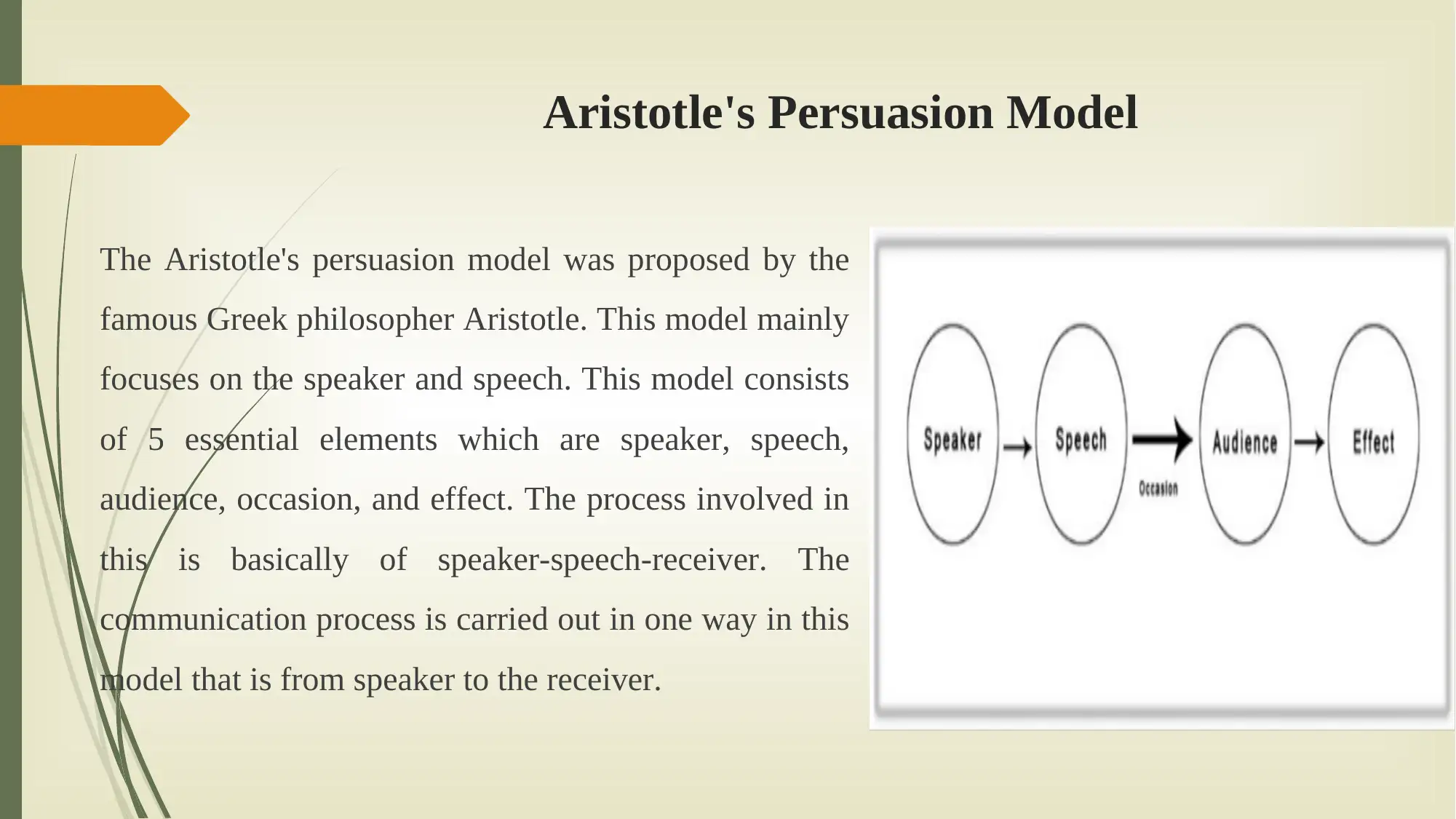
Aristotle's Persuasion Model
The Aristotle's persuasion model was proposed by the
famous Greek philosopher Aristotle. This model mainly
focuses on the speaker and speech. This model consists
of 5 essential elements which are speaker, speech,
audience, occasion, and effect. The process involved in
this is basically of speaker-speech-receiver. The
communication process is carried out in one way in this
model that is from speaker to the receiver.
The Aristotle's persuasion model was proposed by the
famous Greek philosopher Aristotle. This model mainly
focuses on the speaker and speech. This model consists
of 5 essential elements which are speaker, speech,
audience, occasion, and effect. The process involved in
this is basically of speaker-speech-receiver. The
communication process is carried out in one way in this
model that is from speaker to the receiver.
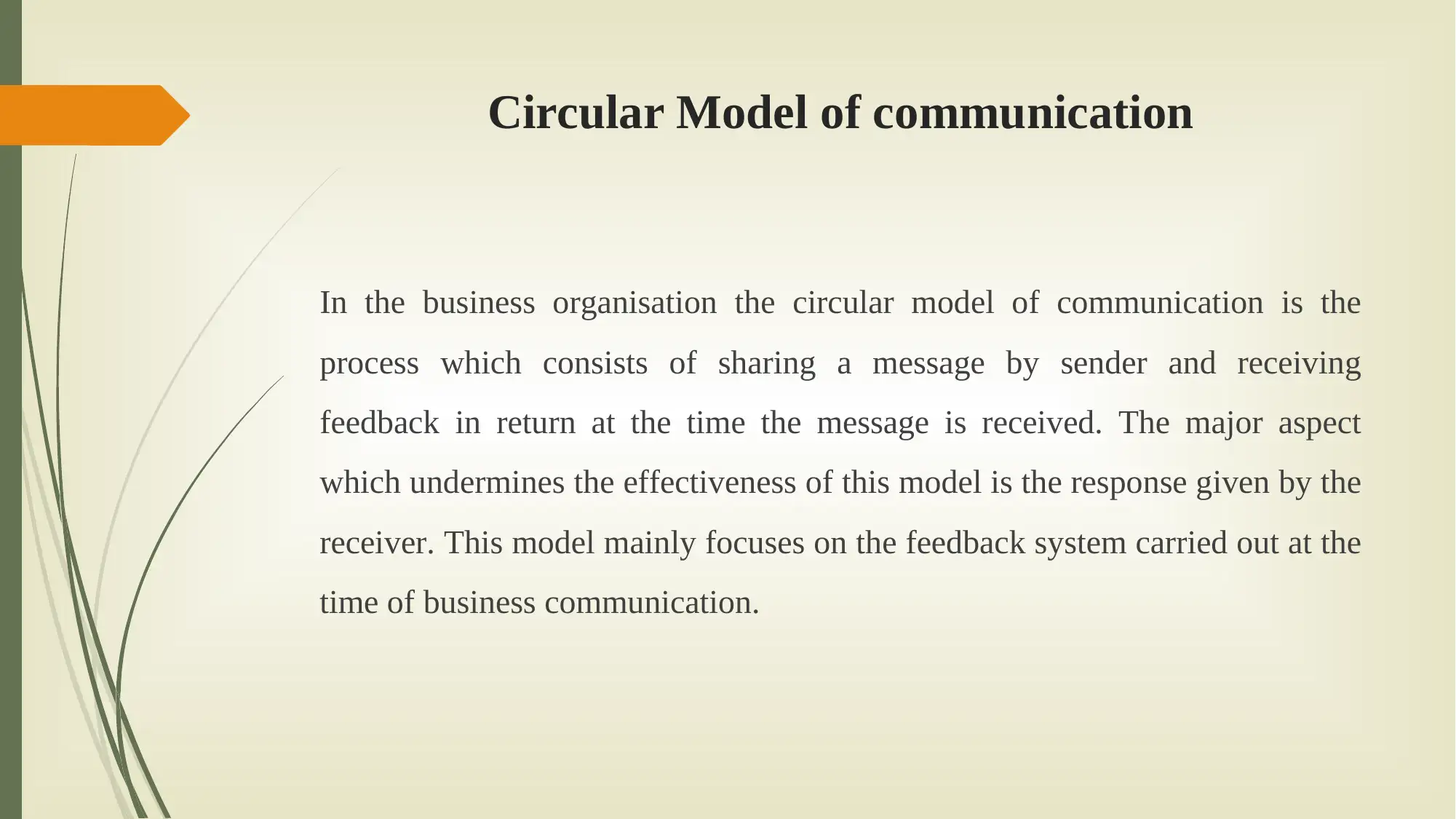
Circular Model of communication
In the business organisation the circular model of communication is the
process which consists of sharing a message by sender and receiving
feedback in return at the time the message is received. The major aspect
which undermines the effectiveness of this model is the response given by the
receiver. This model mainly focuses on the feedback system carried out at the
time of business communication.
In the business organisation the circular model of communication is the
process which consists of sharing a message by sender and receiving
feedback in return at the time the message is received. The major aspect
which undermines the effectiveness of this model is the response given by the
receiver. This model mainly focuses on the feedback system carried out at the
time of business communication.
⊘ This is a preview!⊘
Do you want full access?
Subscribe today to unlock all pages.

Trusted by 1+ million students worldwide
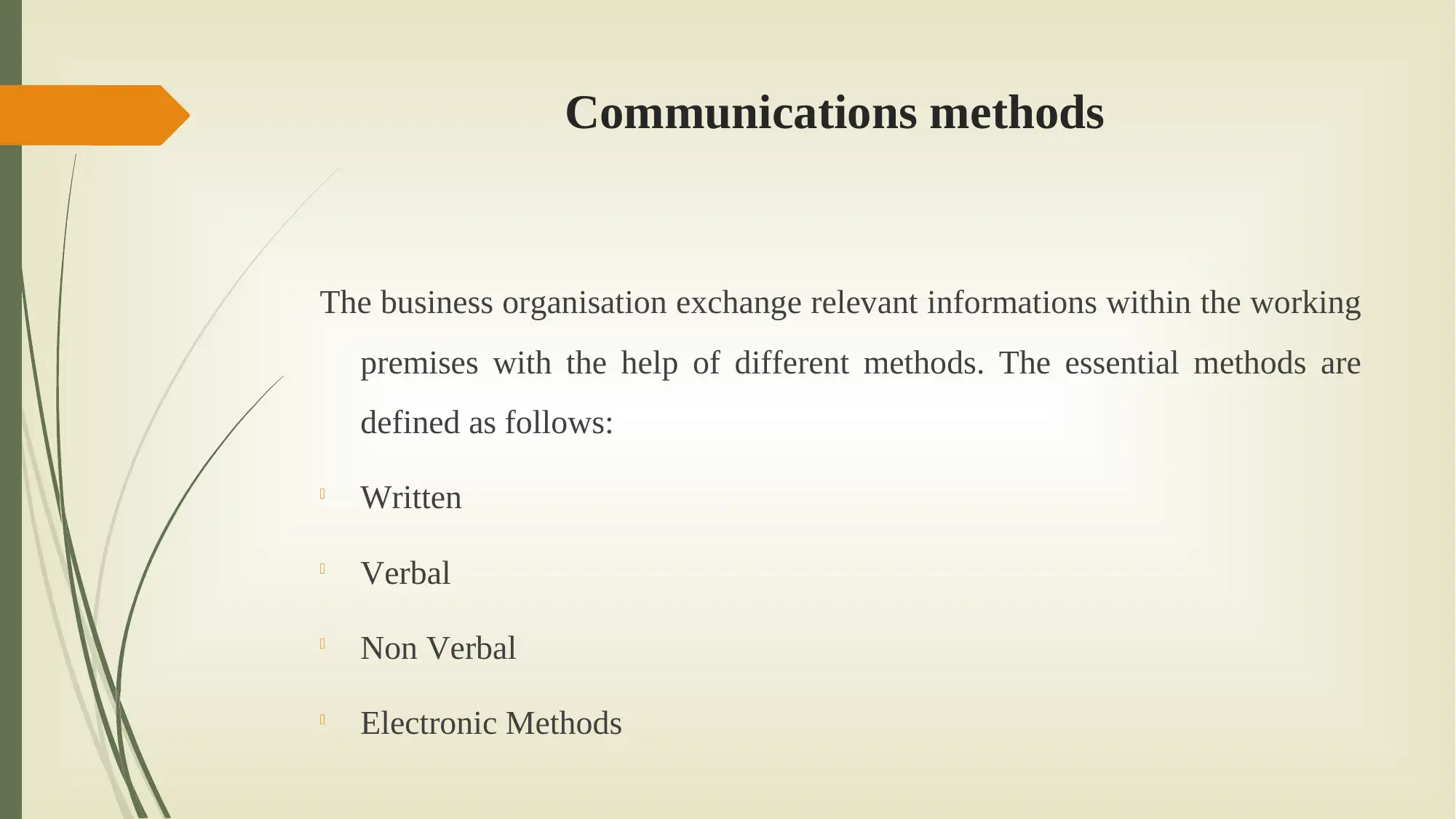
Communications methods
The business organisation exchange relevant informations within the working
premises with the help of different methods. The essential methods are
defined as follows:
Written
Verbal
Non Verbal
Electronic Methods
The business organisation exchange relevant informations within the working
premises with the help of different methods. The essential methods are
defined as follows:
Written
Verbal
Non Verbal
Electronic Methods
Paraphrase This Document
Need a fresh take? Get an instant paraphrase of this document with our AI Paraphraser
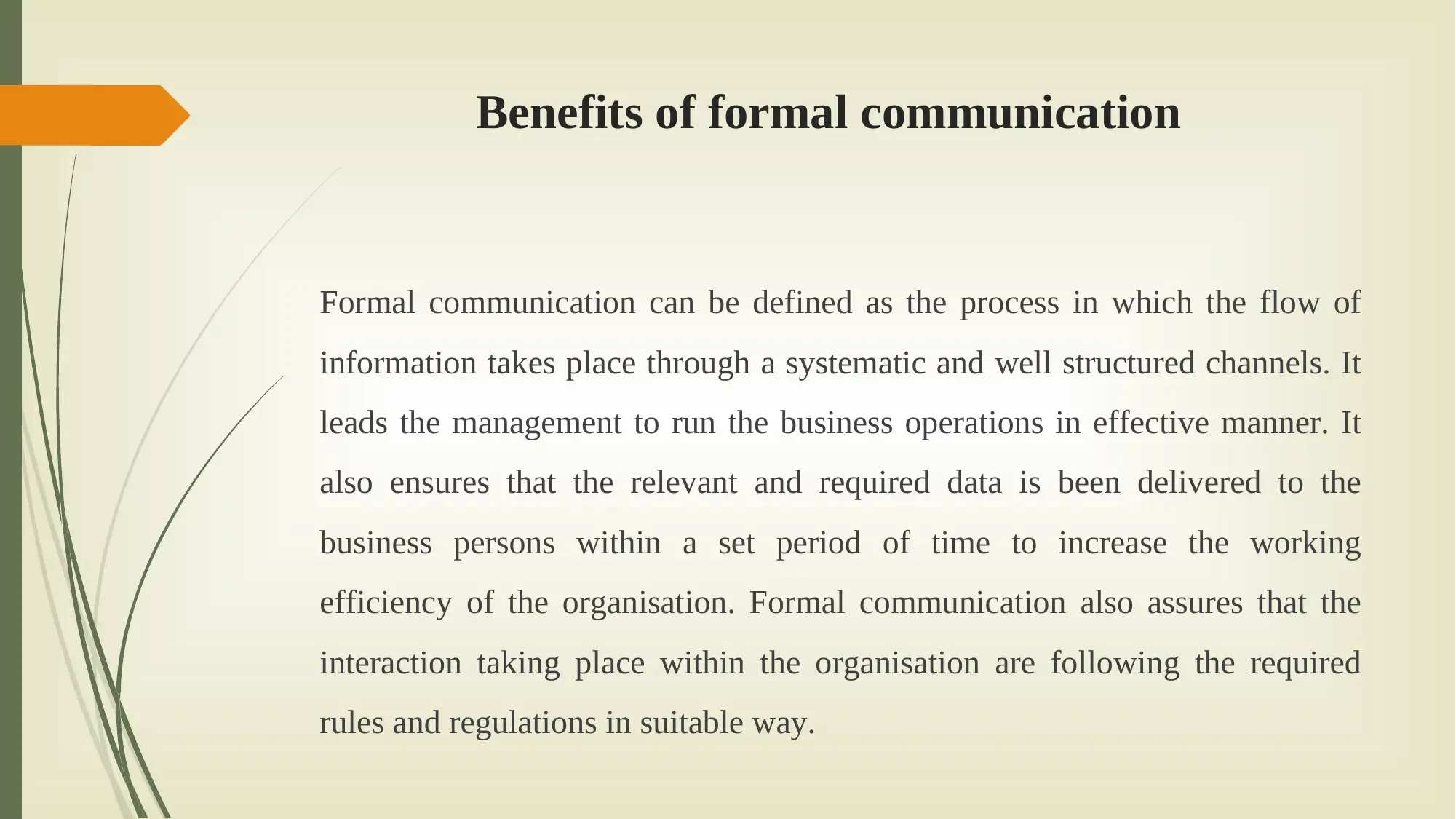
Benefits of formal communication
Formal communication can be defined as the process in which the flow of
information takes place through a systematic and well structured channels. It
leads the management to run the business operations in effective manner. It
also ensures that the relevant and required data is been delivered to the
business persons within a set period of time to increase the working
efficiency of the organisation. Formal communication also assures that the
interaction taking place within the organisation are following the required
rules and regulations in suitable way.
Formal communication can be defined as the process in which the flow of
information takes place through a systematic and well structured channels. It
leads the management to run the business operations in effective manner. It
also ensures that the relevant and required data is been delivered to the
business persons within a set period of time to increase the working
efficiency of the organisation. Formal communication also assures that the
interaction taking place within the organisation are following the required
rules and regulations in suitable way.
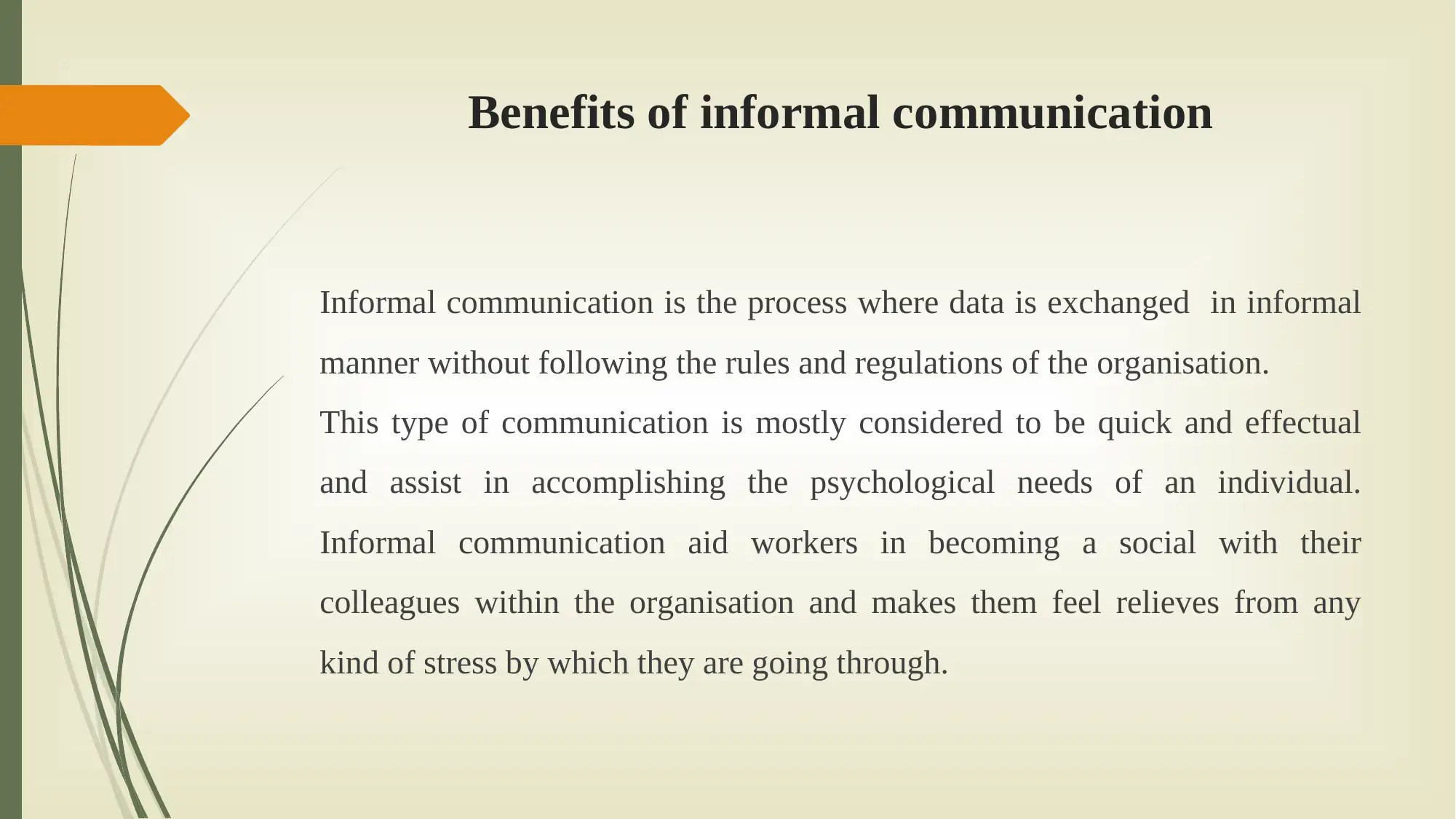
Benefits of informal communication
Informal communication is the process where data is exchanged in informal
manner without following the rules and regulations of the organisation.
This type of communication is mostly considered to be quick and effectual
and assist in accomplishing the psychological needs of an individual.
Informal communication aid workers in becoming a social with their
colleagues within the organisation and makes them feel relieves from any
kind of stress by which they are going through.
Informal communication is the process where data is exchanged in informal
manner without following the rules and regulations of the organisation.
This type of communication is mostly considered to be quick and effectual
and assist in accomplishing the psychological needs of an individual.
Informal communication aid workers in becoming a social with their
colleagues within the organisation and makes them feel relieves from any
kind of stress by which they are going through.
⊘ This is a preview!⊘
Do you want full access?
Subscribe today to unlock all pages.

Trusted by 1+ million students worldwide
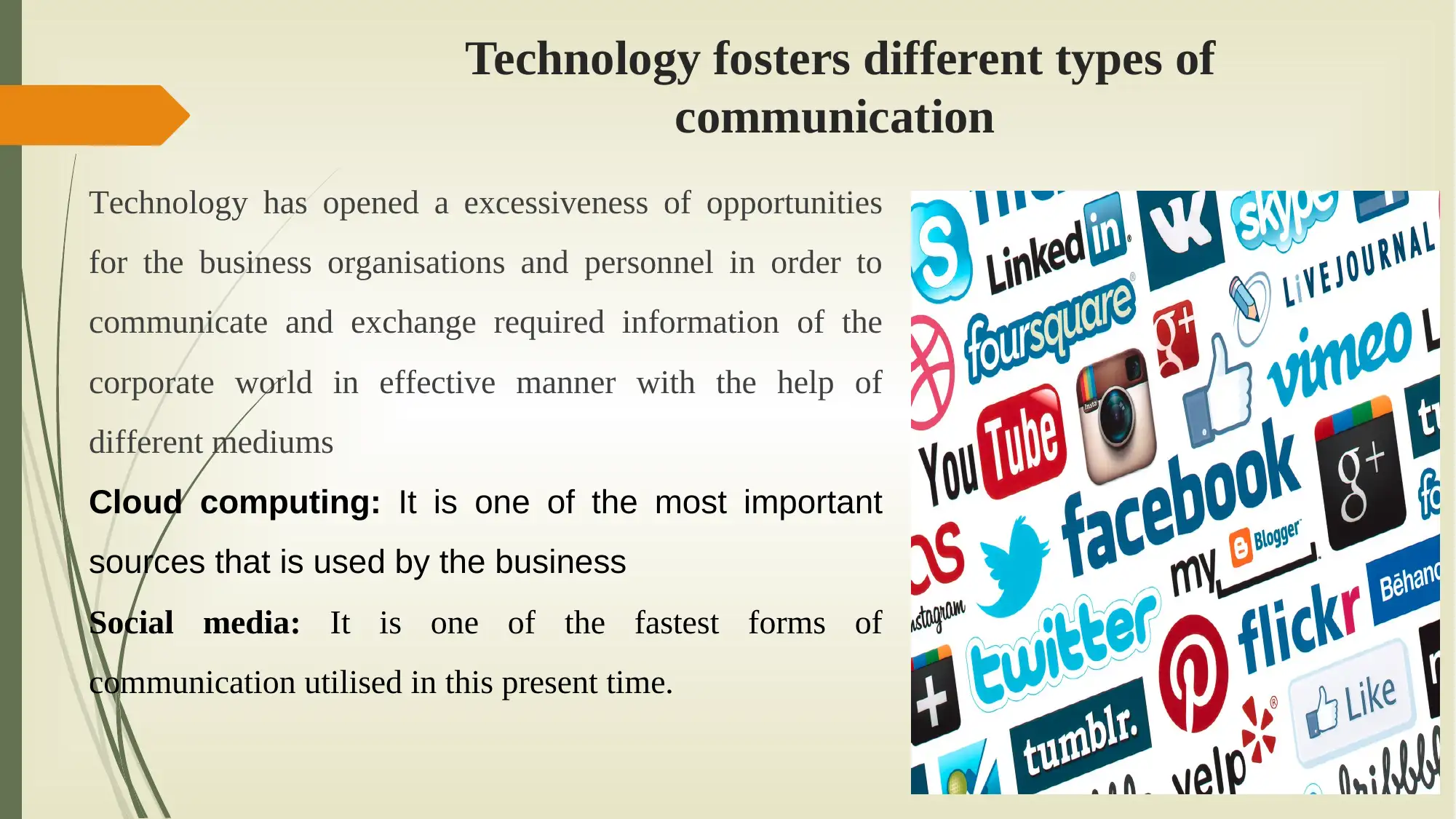
Technology fosters different types of
communication
Technology has opened a excessiveness of opportunities
for the business organisations and personnel in order to
communicate and exchange required information of the
corporate world in effective manner with the help of
different mediums
Cloud computing: It is one of the most important
sources that is used by the business
Social media: It is one of the fastest forms of
communication utilised in this present time.
communication
Technology has opened a excessiveness of opportunities
for the business organisations and personnel in order to
communicate and exchange required information of the
corporate world in effective manner with the help of
different mediums
Cloud computing: It is one of the most important
sources that is used by the business
Social media: It is one of the fastest forms of
communication utilised in this present time.
Paraphrase This Document
Need a fresh take? Get an instant paraphrase of this document with our AI Paraphraser
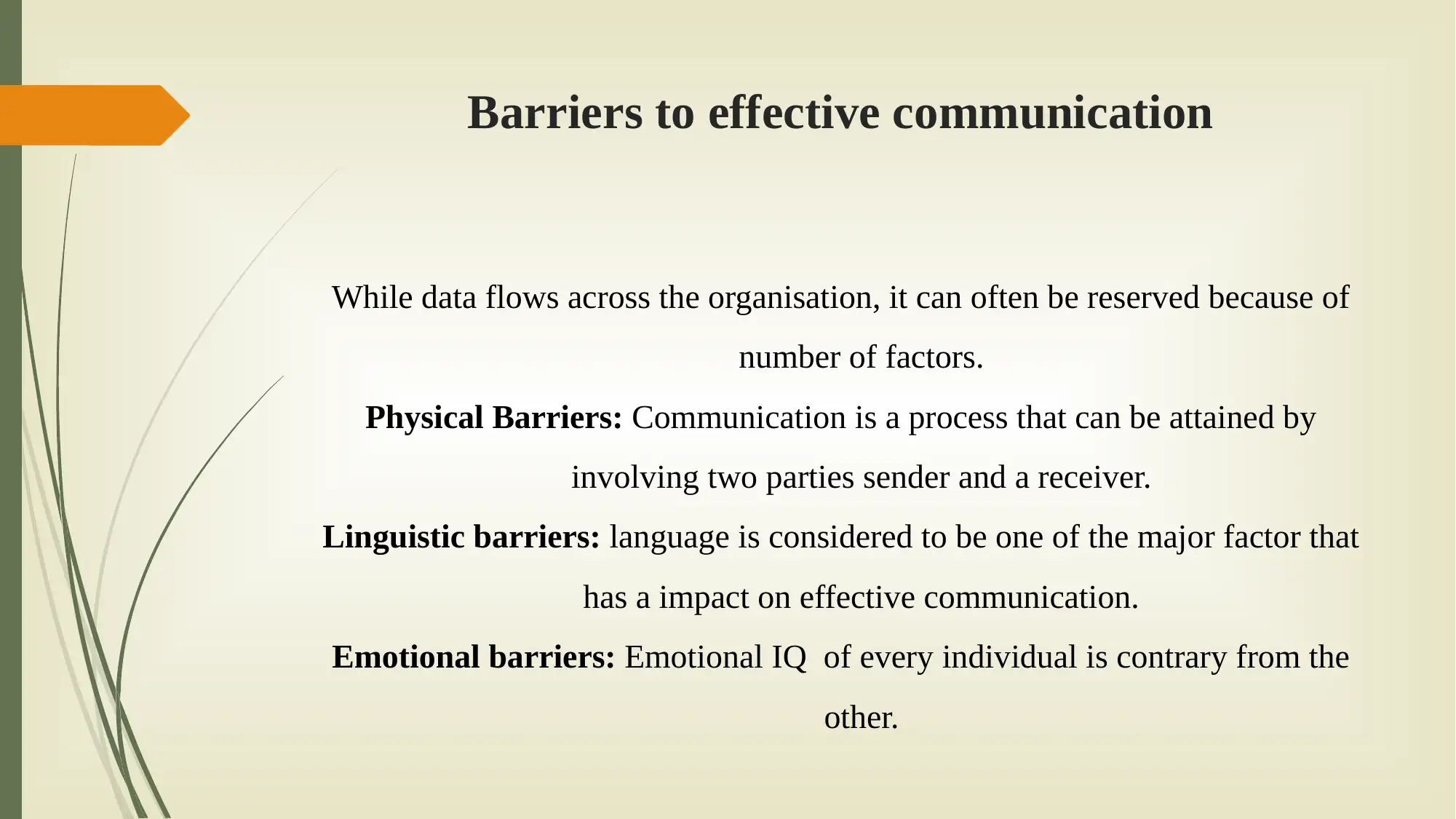
Barriers to effective communication
While data flows across the organisation, it can often be reserved because of
number of factors.
Physical Barriers: Communication is a process that can be attained by
involving two parties sender and a receiver.
Linguistic barriers: language is considered to be one of the major factor that
has a impact on effective communication.
Emotional barriers: Emotional IQ of every individual is contrary from the
other.
While data flows across the organisation, it can often be reserved because of
number of factors.
Physical Barriers: Communication is a process that can be attained by
involving two parties sender and a receiver.
Linguistic barriers: language is considered to be one of the major factor that
has a impact on effective communication.
Emotional barriers: Emotional IQ of every individual is contrary from the
other.
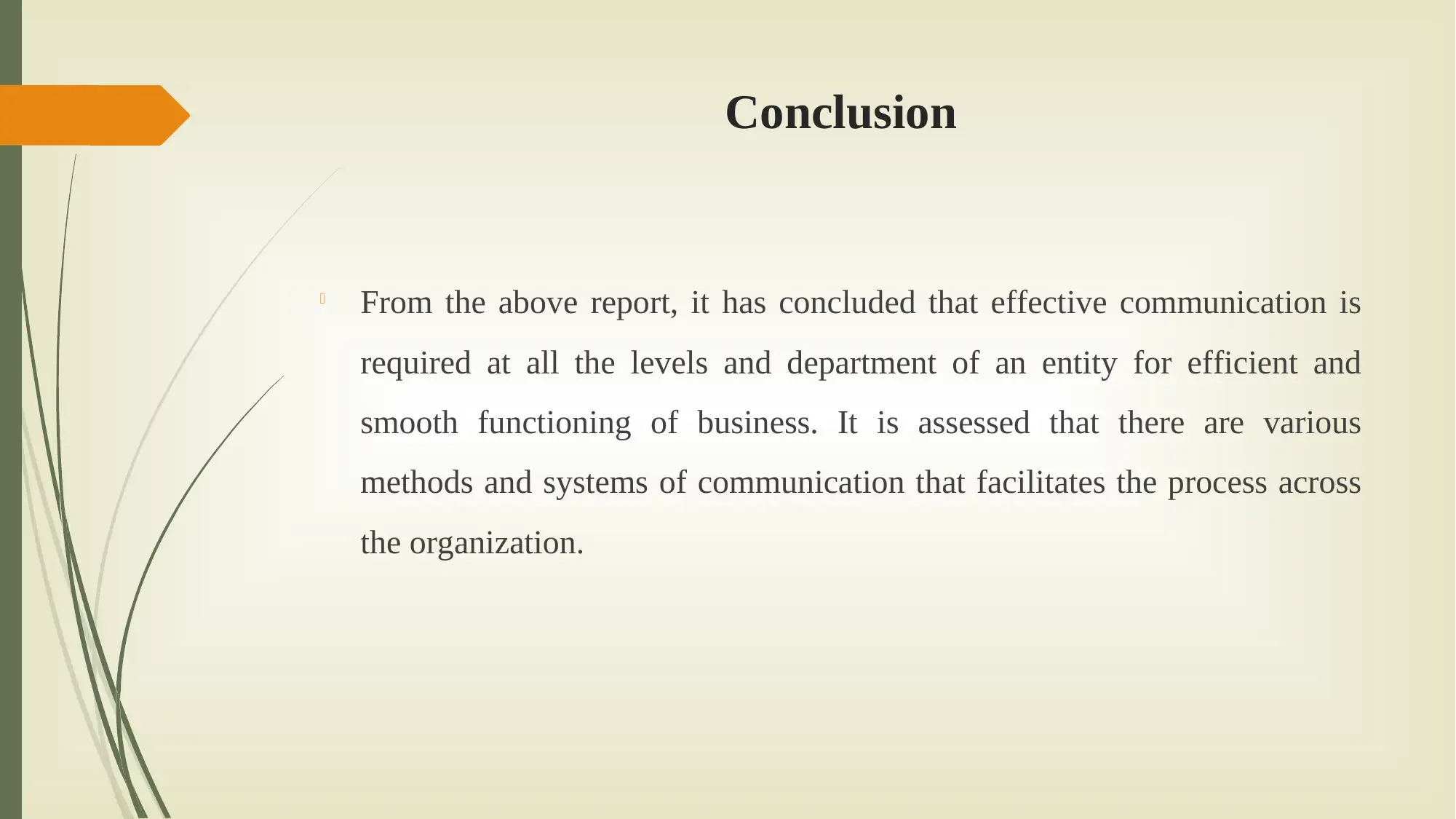
Conclusion
From the above report, it has concluded that effective communication is
required at all the levels and department of an entity for efficient and
smooth functioning of business. It is assessed that there are various
methods and systems of communication that facilitates the process across
the organization.
From the above report, it has concluded that effective communication is
required at all the levels and department of an entity for efficient and
smooth functioning of business. It is assessed that there are various
methods and systems of communication that facilitates the process across
the organization.
⊘ This is a preview!⊘
Do you want full access?
Subscribe today to unlock all pages.

Trusted by 1+ million students worldwide
1 out of 13
Related Documents
Your All-in-One AI-Powered Toolkit for Academic Success.
+13062052269
info@desklib.com
Available 24*7 on WhatsApp / Email
![[object Object]](/_next/static/media/star-bottom.7253800d.svg)
Unlock your academic potential
Copyright © 2020–2025 A2Z Services. All Rights Reserved. Developed and managed by ZUCOL.





